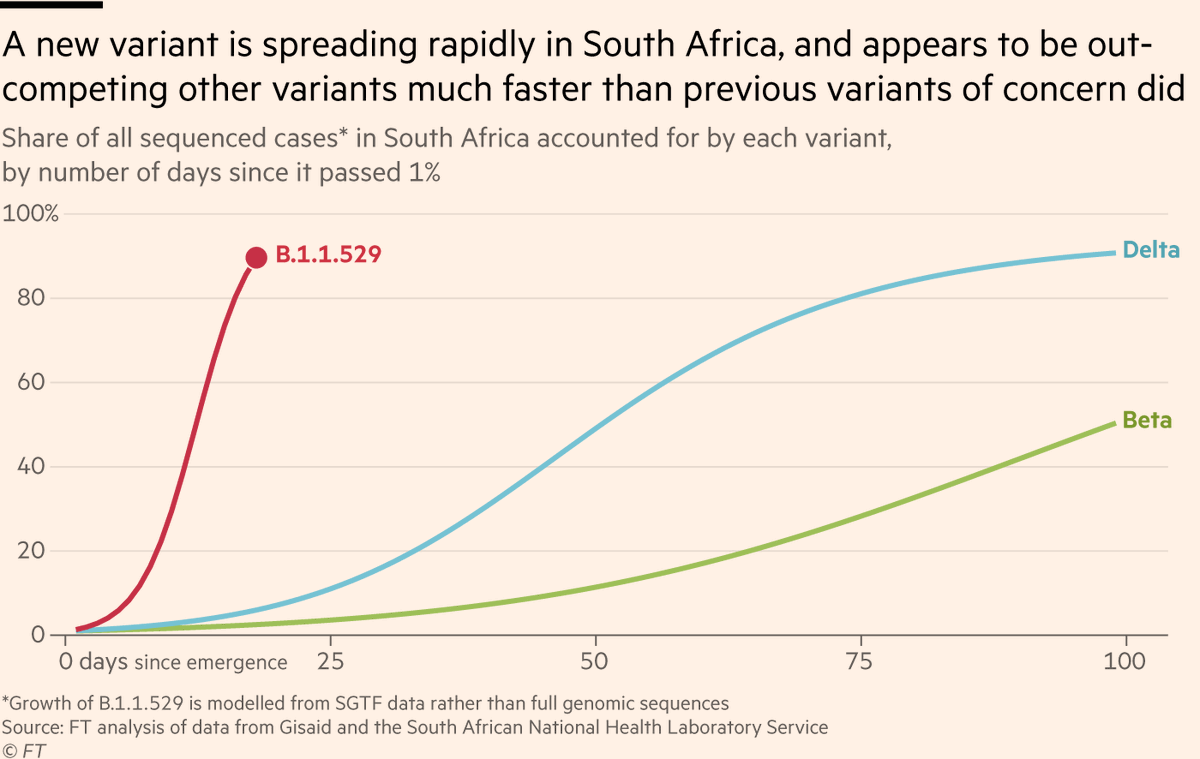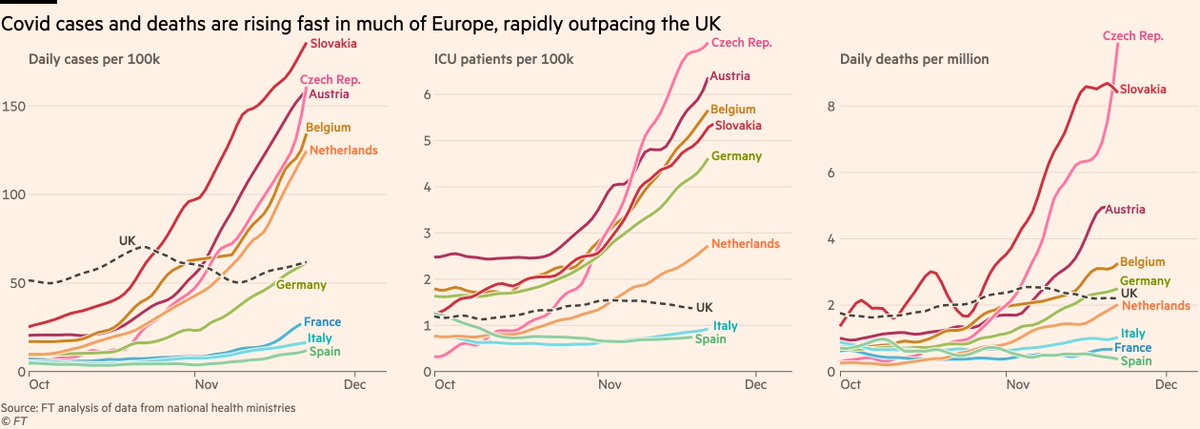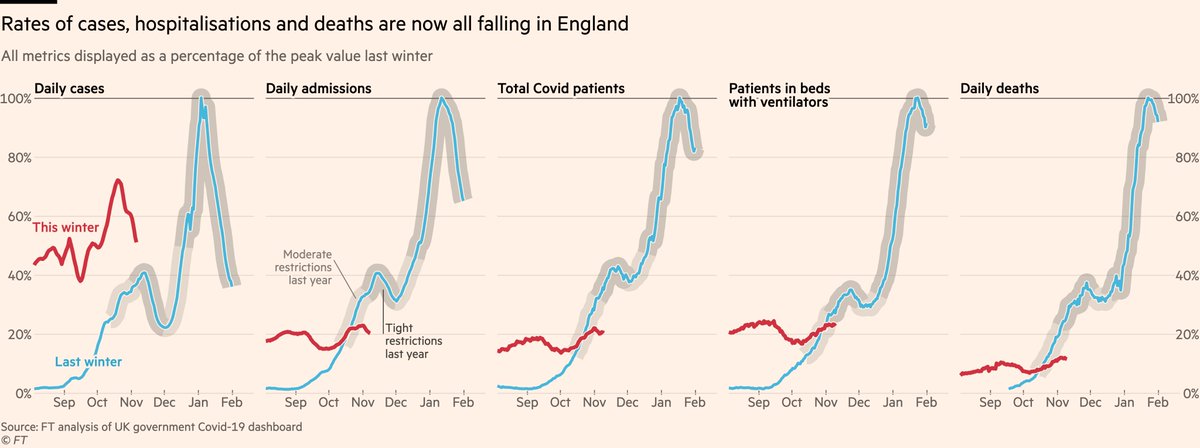
Five quick tweets on the new variant B.1.1.529
Caveat first: data here is *very* preliminary, so everything could change. Nonetheless, better safe than sorry.
1) Based on the data we have, this variant is out-competing others *far* faster than Beta and even Delta did 🚩🚩
Caveat first: data here is *very* preliminary, so everything could change. Nonetheless, better safe than sorry.
1) Based on the data we have, this variant is out-competing others *far* faster than Beta and even Delta did 🚩🚩

2) This is coinciding with a wider rise in cases in South Africa.
Again, currently we’re talking about small numbers (both of B.1.1.529 and of cases in SA overall), but there’s a clear upward trend. This may be a blip, but this is how waves start.
Again, currently we’re talking about small numbers (both of B.1.1.529 and of cases in SA overall), but there’s a clear upward trend. This may be a blip, but this is how waves start.

3) Aside from its rapid rise in South Africa, the other key reason for concern here is that the specific mutations that B.1.1.529 has are — based on what we’ve seen with other variants — known to be associated with greater transmissibility & immune evasion
https://twitter.com/miamalan/status/1463846528578109444
4) Caveats
• This variant wasn’t known about *last week*. V early days
• Case rates v low when it emerged, so some of this could be a founder effect. Nonetheless it’s outcompeting Delta
• Urgent search for more data means some growth could be due to targeted testing/sequencing
• This variant wasn’t known about *last week*. V early days
• Case rates v low when it emerged, so some of this could be a founder effect. Nonetheless it’s outcompeting Delta
• Urgent search for more data means some growth could be due to targeted testing/sequencing
5) But what data we do have is clearly cause for concern.
Our preliminary story, from @donatopmancini @mroliverbarnes ft.com/content/57ccc9…
Our preliminary story, from @donatopmancini @mroliverbarnes ft.com/content/57ccc9…
And see this thread from @PeacockFlu that first raised the alarm
https://twitter.com/PeacockFlu/status/1463466705041174535
To be clear:
• I dearly hope this turns out just to be a blip
• If it does I’ll gladly walk thru the charts I’ve made here & talk thru why they looked alarming at the time despite not ending up to be significant, and what that would mean for future variant emergence charts/data
• I dearly hope this turns out just to be a blip
• If it does I’ll gladly walk thru the charts I’ve made here & talk thru why they looked alarming at the time despite not ending up to be significant, and what that would mean for future variant emergence charts/data
Oh, and for people who’ve looked at this chart of cases in South Africa and their jaw hit the floor: that spike on Nov 23rd is an error in the data. It should be 868 cases, not 18,586 sacoronavirus.co.za/2021/11/23/upd… 

Nonetheless numbers are really rising. Tuesday 868, Weds 1,275, and since I posted the first tweet Thursday’s figure has come out: 2,465.
Which means the wave chart now looks like this:
Which means the wave chart now looks like this:

• • •
Missing some Tweet in this thread? You can try to
force a refresh
















